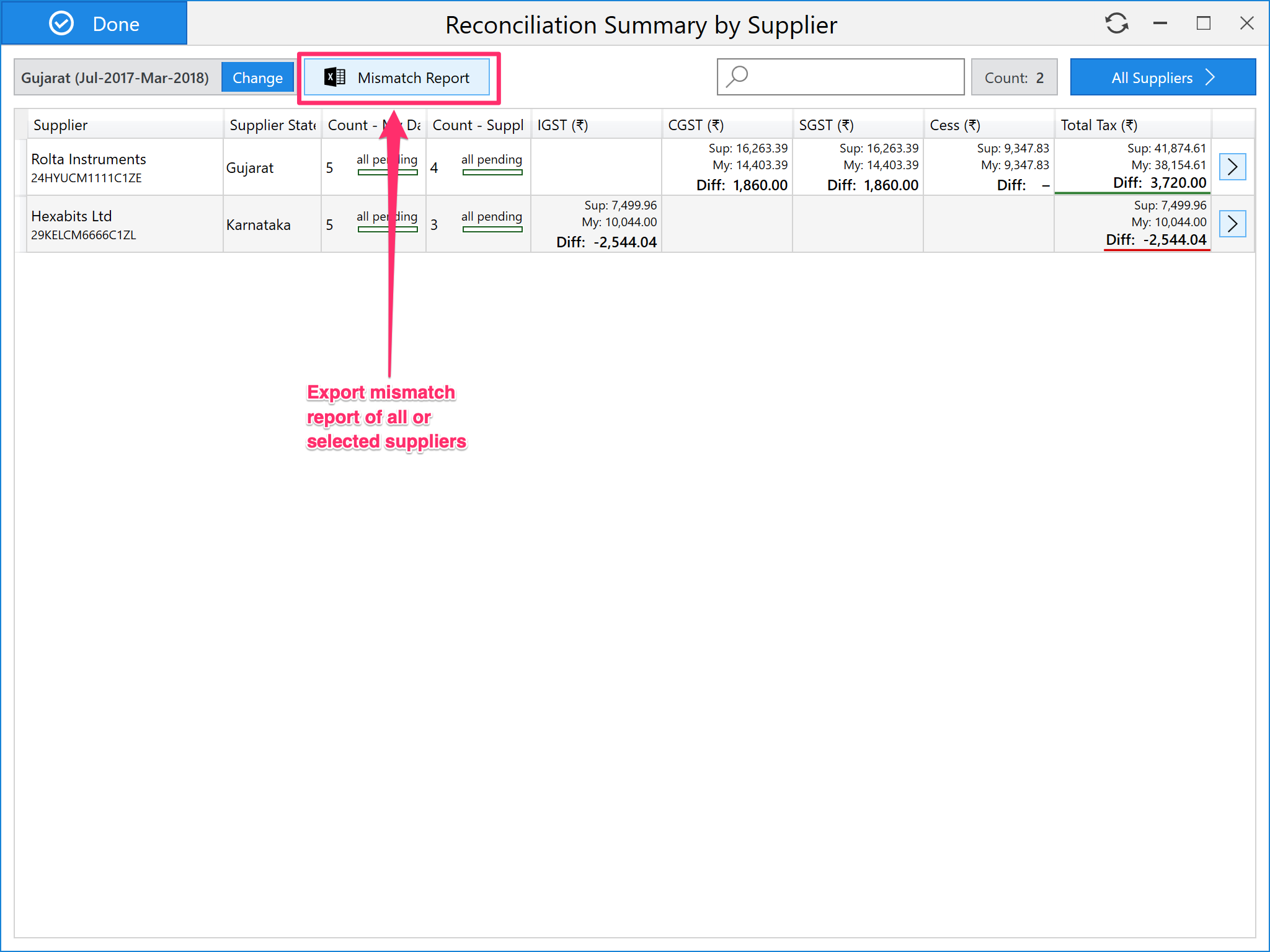GSTR-2A
Reconcile with Purchase Register
In order to avoid ITC reversal because of any discrepancies in data reported by supplier and receiver, it is very important for you to carefully match the data reported by your suppliers with your own purchase documents. Matching is also very important to ensure that you don't miss any ITC claim.
Depending on the nature of business, the number of purchase documents can be anything from few to thousands or even more. Even in a single document, there are many details like Place of Supply, Date, Reverse Charge applicability, Total Value etc. All these details have to be examined carefully so that any incorrect data reporting can be avoided.
As the number of purchase document increases, it becomes infeasible to manually compare all these details. That's why Octa GST provides auto-matching functionality, which can compare thousands of documents with-in seconds and presents the results so that you can take appropriate actions on any differences.
Add Purchase & GSTR-2A Data
In order to do matching and reconciliation of GSTR-2A data with purchase register, naturally the first step is to add both purchase and GSTR-2A data to Octa GST. If you haven't done it yet, please refer below articles for same:
IMPORTANT: Auto-matching and reconciliation needs both GSTR-2A data on GST Portal and Purchase data. Without entering both, it is not possible to match & reconcile. Please refer how to add GSTR-2A data and how to add purchase data before continuing.
Matching Configuration
To match the purchase data with GSTR-2A data, simply:
- Open the GSTR-2A page
- Click Match & Reconcile button
This will open a matching/reconciliation configuration page:
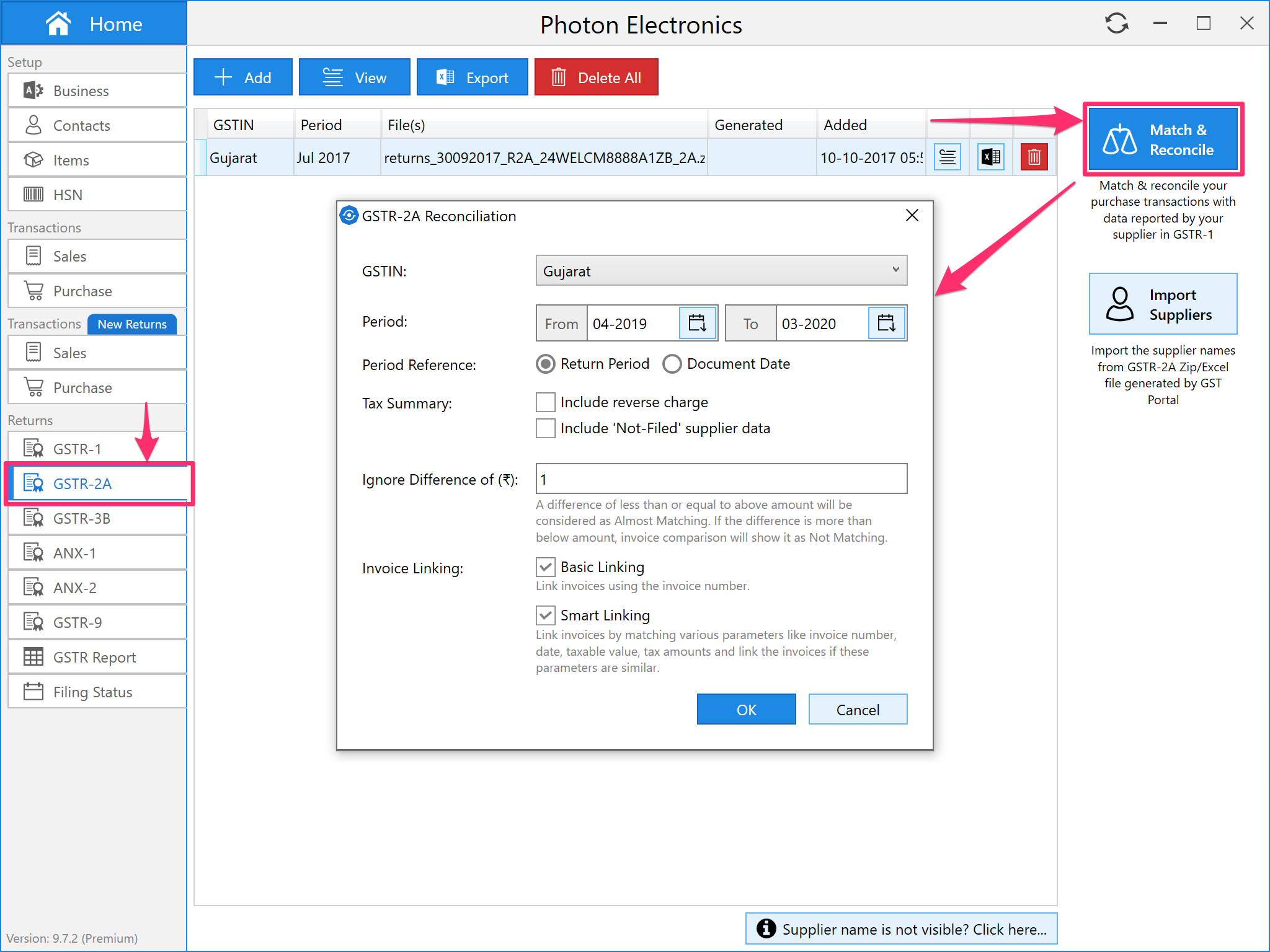
You can select the following parameters related to reconciliation
| Parameter | Description |
|---|---|
| GSTIN | Your business GSTIN which you would like to reconcile |
| Period | The period you would like to reconcile. You can select month, quarter, financial year, or even a other custom period. The documents in your purchase register that belong to this period, will be selected for reconciliation |
| Period Reference | This specified the information which should be used as period reference. If you selected Return Period, then return period in your purchase will be used as the source of period. If you select Document Date, then document date (Invoice Date) will be used as the source of period. |
| Tax Summary - Include Reverse Charge | Octa GST reconciliation shows a supplier summary (explained below). This parameter specified whether to include GST subject to reverse charge, in the summary calculation. |
| Tax Summary - Include Not-Filed Supplier Data | Octa GST reconciliation shows a supplier summary (explained below). This parameter specified whether to include GST in documents which are uploaded but not yet filed by supplier. |
| Ignore Difference | Octa GST shows the matching status of documents (explained below). This parameter specifies the difference up to which should be considered as insignificant. If the differece is below this parameter, Octa GST will show Almost Matching status. If the difference is more than this parameter, Octa GST will show Not Matching status. |
| Basic Linking | Specifies whether to use Basic Linking algorithm for linking invoices. Basic linking is explained in detail below |
| Smart Linking | Specifies whether to use Smart Linking algorithm for linking invoices. Smart linking is explained in detail below |
The period in which you book your purchase transaction in your books, may be diffrent from the period in which supplier reports it in his GSTR-1. This is a very common scenario and Octa GST takes care of this by always looking for related documents in all periods. This works automatically and there is no configuration required for that.
Basic Linking
Basic linking algorithm uses the following parameters to link the related documents in purchase and GSTR-2A data:
- Supplier GSTIN
- Document Type
- Document Number
- Financial Year
If basic linking is selected, Octa GST will link all such documents for which above parameters match exactly.
Smart Linking
If the data quality of both purchase and GSTR-2A data is very high, then basic linking should be able to successfully link related documents in purchase and GSTR-2A data. But in pracice, it is extremely common to have mistakes in document numbers. This might be the case with your purchase data. Even if you maintain very high quality data, your suppliers may change (append or prepend) the document number while uploading to GST Portal in GSTR-1.
To address this common issue, Octa GST used Smart Linking algorithm which matches the related documents based on the similarity of data in purchase and GSTR-2A. The following parameters are used to calculate a similarity score:
- Document Number
- Document Date
- Taxable Value
- Tax Amounts
If this similarity score is high, Octa GST will link such documents automatically. This saves a lot of time and effort which would otherwise have been spent in manually linking the invoices.
Reconciliation
Octa GST supports bulk actions so that you can reconcile a large number of documents in few clicks only. At the same time, it provides fine controls so that you can analyse individual documents if needed and take appropriate actions. This design puts you in control without compromising the productivity.
When you start the reconciliation, Octa GST will first show the supplier-wise summary. This screen may be used to decide that which supplier you need to focus on. The tax difference meter will show the amount of difference in a graphical manner. So in one simple glance, you will know the suppliers for which there is a large difference in aggregate tax amount. You can double click on any supplier to view the reconciliation screen. If you wish to reconcile all the suppliers in one go, you may click on All Suppliers button.
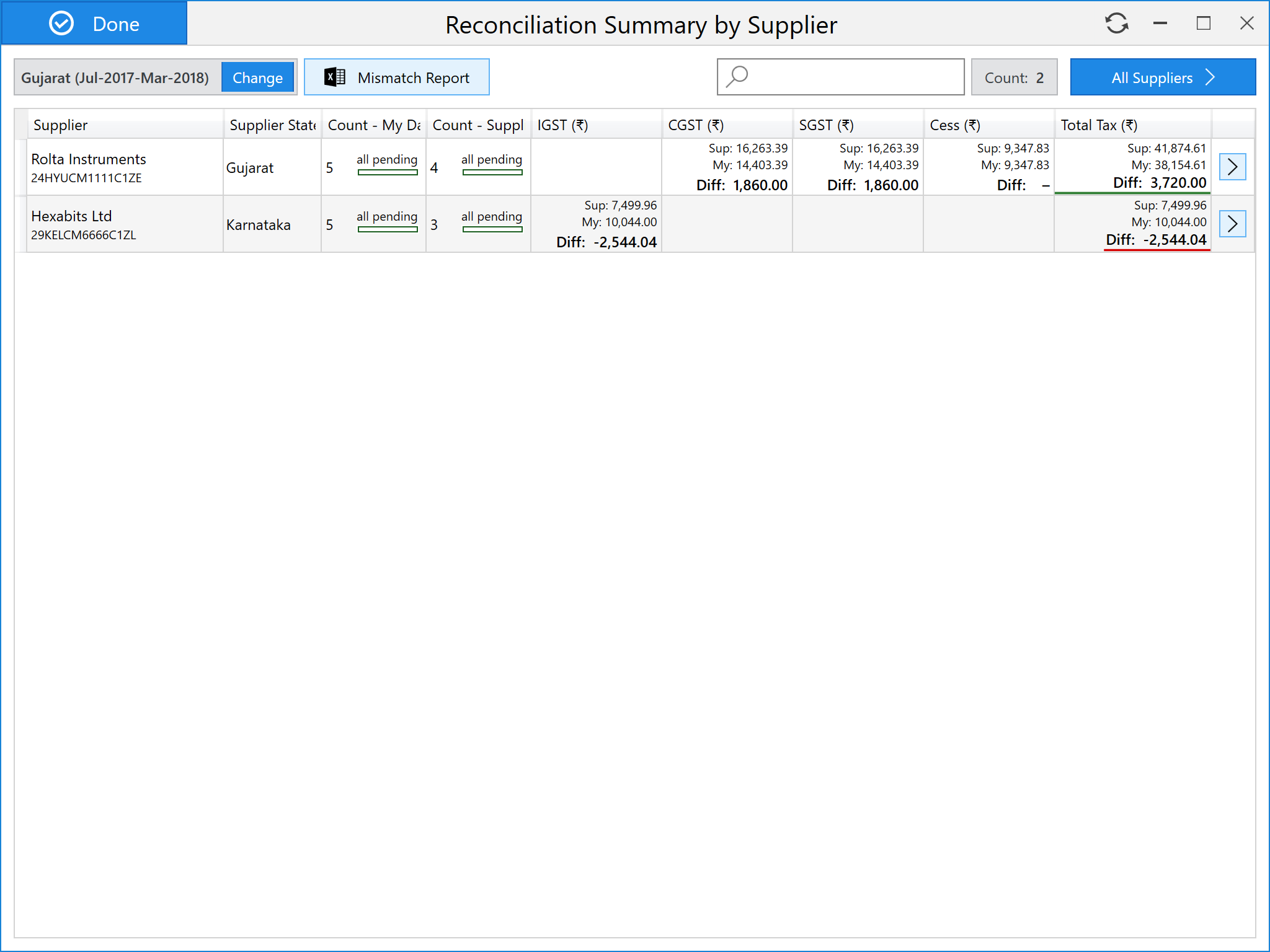
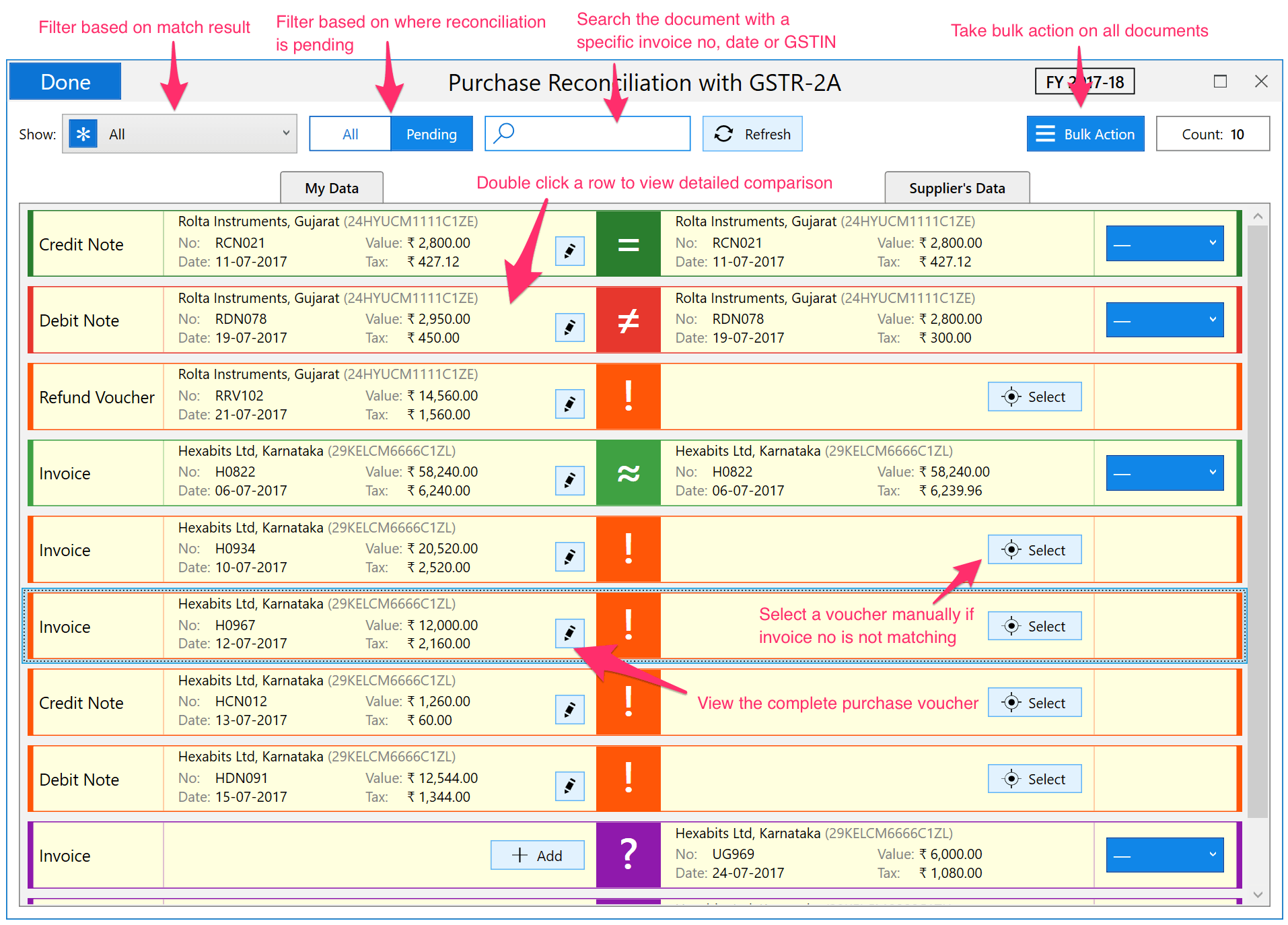
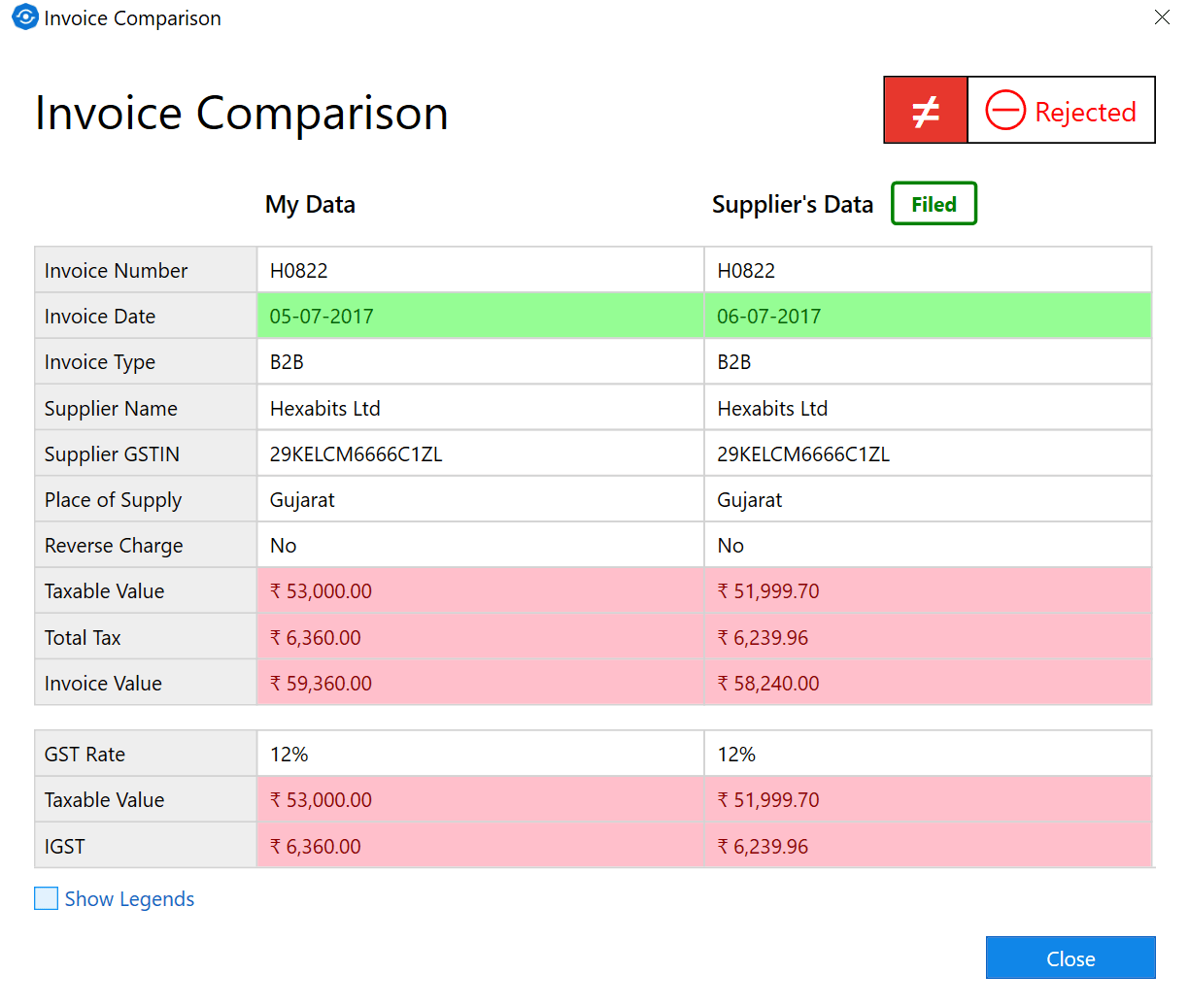
Depending on the match result, you can take appropriate actions on each purchase document.
- Accept: This action means you agree with the data reported by your supplier.
- Reject: This action indicates you don't agree with the data reported by supplier.
- No Action: This action indicates you would like to reconcile this invoice/document later.
Octa GST will automatically match the purchase documents and show the results. Depending on the details, there are five possible match results:


Match: Purchase data matches with data reported by your supplier.


Almost Match: Purchase data matches with data reported by your supplier but there are minor differences. By default, a difference of less than or equal to one rupee is considered as minor difference but this limit can be configured by you. These type of differences normally occur in case of rounding issues in different accounting softwares.
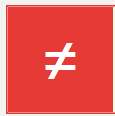

Mismatch: Purchase data does not match with data reported by your supplier. This means there are important differences which should not be ignored.


Missing in Purchase: Reported by supplier but not found in your purchase data. This means either you have missed this invoice/document in your purchase data or supplier has incorrectly reported that invoice/document.

Missing in GSTR-2A: Present in your purchase data but it is not reported by your supplier. This normally means either your supplier has not filed his GSTR-1 return or missed this invoice/document in his return. It is very important to report these invoices/documents to your supplier so that you don't miss the ITC on these documents.
When the background colour of above symbols is shown as gray, the meaning of match result is same but it indicates that your supplier has reported that invoice/document but has not filed his return.
Exporting Mismatch Report
Once the reconciliation is done, you can click on Mismatch Report button to export the data to an Excel file. You can also click on Excel button to export the mismatch report for an individual supplier.
